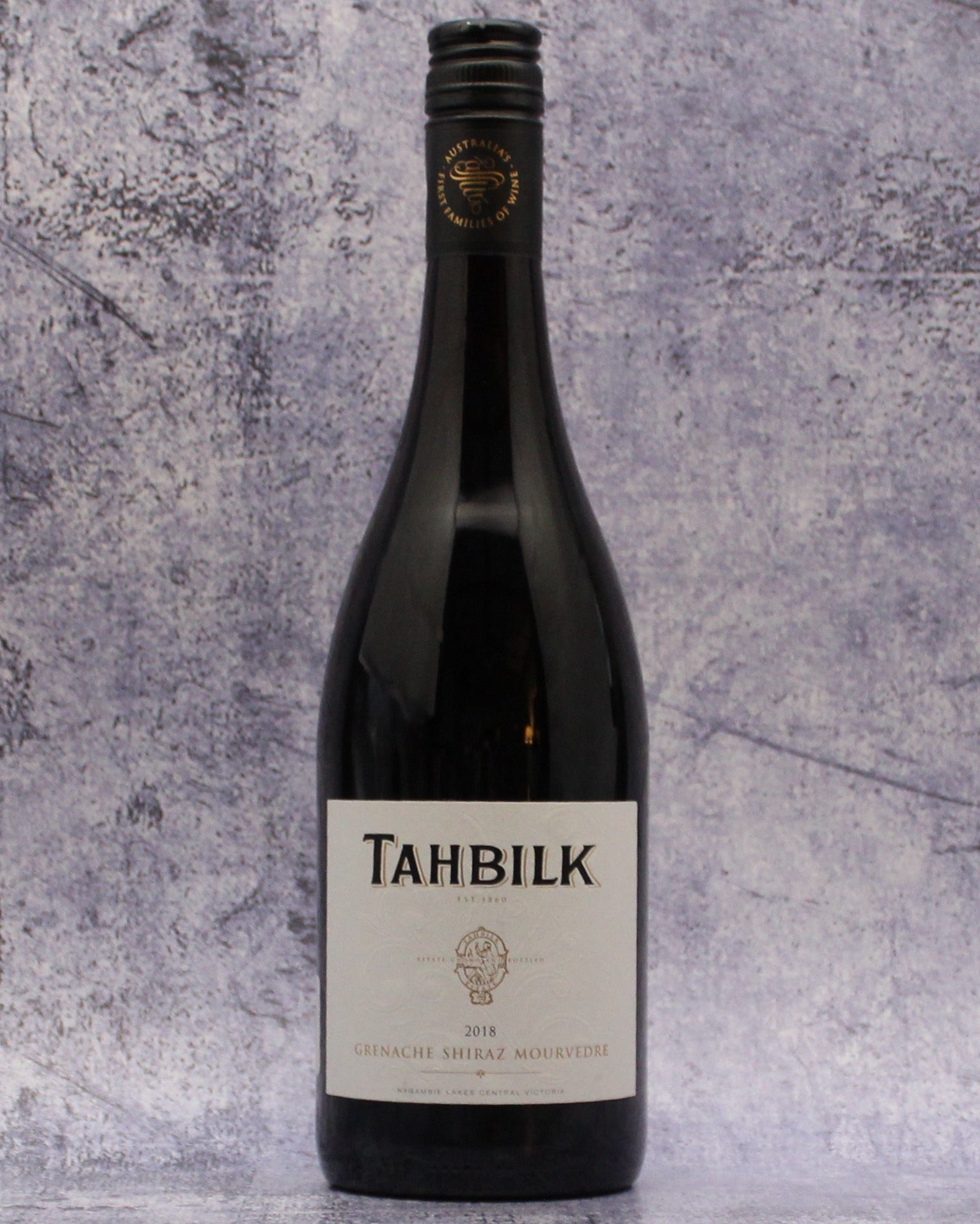Description
From: Nagambie Lakes, Central Victoria, Australia
Varietal: Grenache, Shiraz, Mourvedre
Taste: The 2018 Tahbilk GSM blend is exceptionally approachable in its youth and can age gracefully and develop even greater complexity. It opens with lifted, gamey, and leathery aromatics, interwoven with red berries, black cherry, and spice notes. This leads to a rich, velvety palate bursting with dark plum, raspberry, and berry fruits, accented by hints of licorice, subtle earthiness, and a touch of spice. This layered profile offers immediate appeal and the promise of further evolution in the cellar.
Pairing: Its gamey, leathery aromatics and velvety fruit profile beautifully complement slow-braised lamb shanks, where the wine’s dark plum and berry notes accentuate the meat’s richness—herb-crusted pork tenderloin with a blackberry sauce. The wine’s dark plum and berry notes complement the rich flavors of the pork, while the blackberry sauce mirrors the wine’s berry undertones. For a hearty vegetarian option, roasted portobello mushrooms stuffed with herbs and cheese provide an earthy depth that complements the wine’s subtle earthiness. The licorice and spice notes naturally fit Moroccan spiced lamb meatballs, balancing the dish’s bold flavors. Charred eggplant with tahini and pomegranate seeds offers a smoky, savory profile, highlighting the wine’s lifted aromatics and berry flavors. Finally, pepper-crusted steak with rosemary roasted potatoes is ideal, as the wine’s spice and tannin structure match the dish’s robust flavors and textures. This selection of dishes highlights the 2018 GSM’s versatility and ability to elevate various flavors.
Grilled Eggplant, Herby Lentils and Turmeric Tahini
By Hetty Lui McKinnon
About: Tahbilk Winery, one of Australia’s oldest family-owned wineries, carries a legacy dating back to its founding in 1860. In Victoria’s Nagambie Lakes region, Tahbilk’s history began when pioneering winemakers recognized the potential in this unique environment along the Goulburn River. Taking its name from the local Aboriginal term meaning “place of many watering holes,” Tahbilk planted its first vines, including European varieties like Shiraz and Marsanne, and quickly gained a reputation for producing exceptional wines. 1925, the Purbrick family acquired the winery, beginning a generational legacy. Eric Purbrick, a key figure in its evolution, introduced modern production methods while respecting the winery's heritage. This balance has allowed Tahbilk to thrive and become a stalwart in Australian winemaking.
Several vital dates mark Tahbilk’s journey. Its founding in 1860 set the stage for early success, but the Purbrick family’s acquisition in 1925 truly set the winery on its course. In the 1950s, Eric Purbrick led efforts to modernize Tahbilk, and in 1979, the winery joined Australia’s “Earth Sanctuaries” movement, emphasizing sustainable land management long before it became widespread. By 2004, Tahbilk had implemented a carbon-neutral program, pioneering environmental practices that now serve as a model for others.

